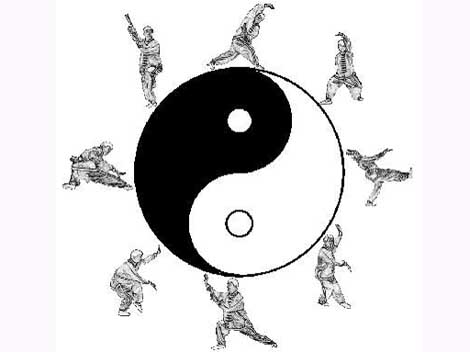 |
|
Bugua Zhang [Photo/cultural-china.com]
|
Bagua Zhang or the eight-diagram palm is one of the most popular schools in China. It is also called Youshen Bagua (roving eight-diagram), Longxing Bagua (dragon-shaped eight-diagram), Xingyi Bagua (Xingyi eight-diagram Chuan), Yinyang Bapan Zhang (positive-negative eight-plate palm), etc.
There are different stories about the origin of this school of Chuan. Some say it originated among the anti-Qing Dynasty cliques while others believe that it was created by the two Taoist priests of Bi Yun and Jing Yun on Mount Emei in Sichuan Province during the late Ming Dynasty and early Qing Dynasty and it has been passed down to its ninth generation of practitioners.
Most of Bagua Zhang boxers are found in Hebei Province. Some of them learned Bagua Zhang from scratch from their tutors, while others asked the masters for advice to improve their own skills. Over the years various routines of exercises were cultivated in different styles.
The eight-diagram palm is based on the old Chinese philosophy of eight combinations of three whole and broken lines used in divination. While practising, the practitioner moves according to the eight diagrams. There are eight basic palm plays. A total of 64 palm tricks and moves have come from the original eight basic palm plays. Apart from solo practices, there are also sparrings, Sanshou (free sparring) and fighting with weapons, such as Bagua sword play, Bagua sabre play and Bagua cudgel play, and Bagua play of shaft decorated with seven stars, etc. While practising these routines, practitioners rove around like a dragon moving amidst clouds (see picture).
Bagua Zhang features dexterity and agility. When moving around it is like walking in a muddy place, with foot steps changing all the time like running water. Palm tricks and body movements follow one after another. The roving around looks like endless circles which overlap one another. The body turns around from the waist during walking, roving, turning, rising and falling. Palm tricks change with the movements of the body. When the upper body protrudes, the lower part of the body squats back to keep balance. When the arms are sent out, the feet are drawn back. When moving it is like a roaming dragon; when squatting it is like a sitting tiger; when looking around it is like a monkey on the lookout; when roving it is like a circling eagle.
We Recommend:
